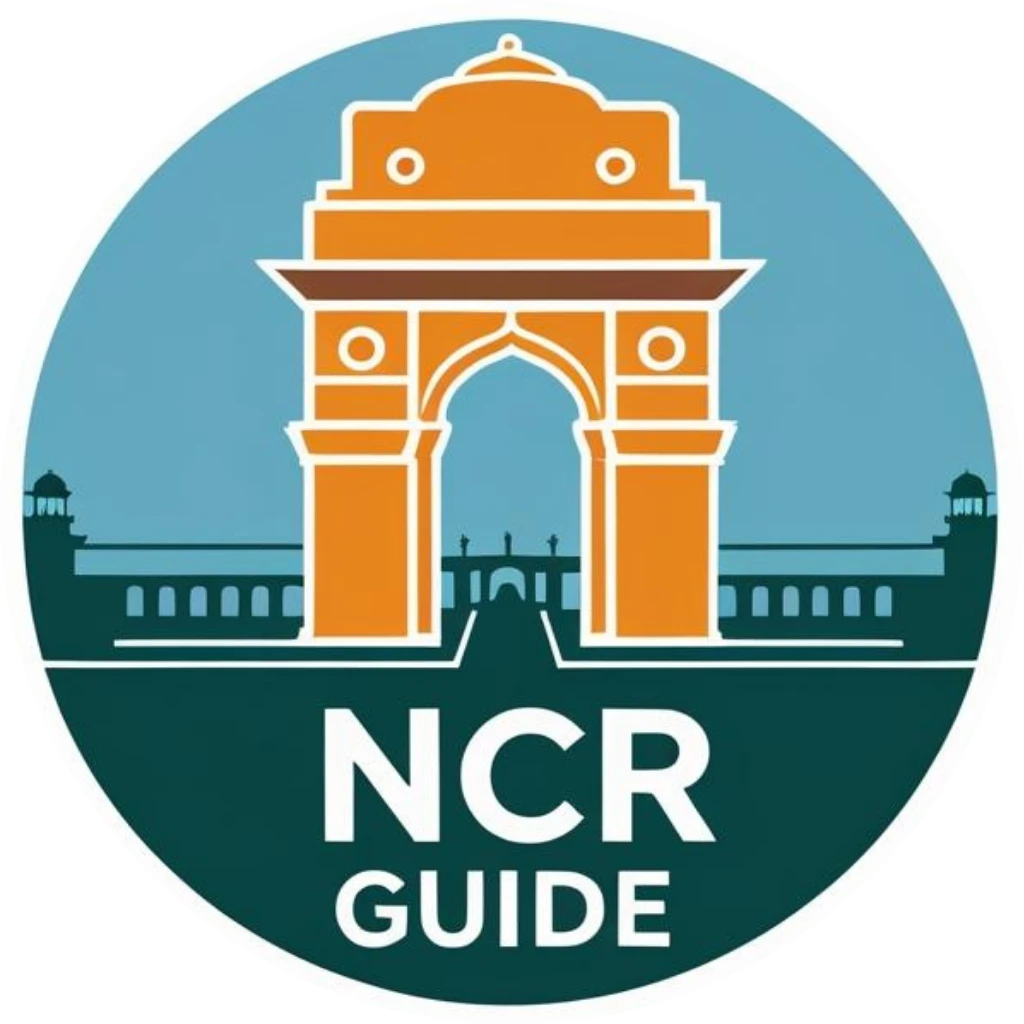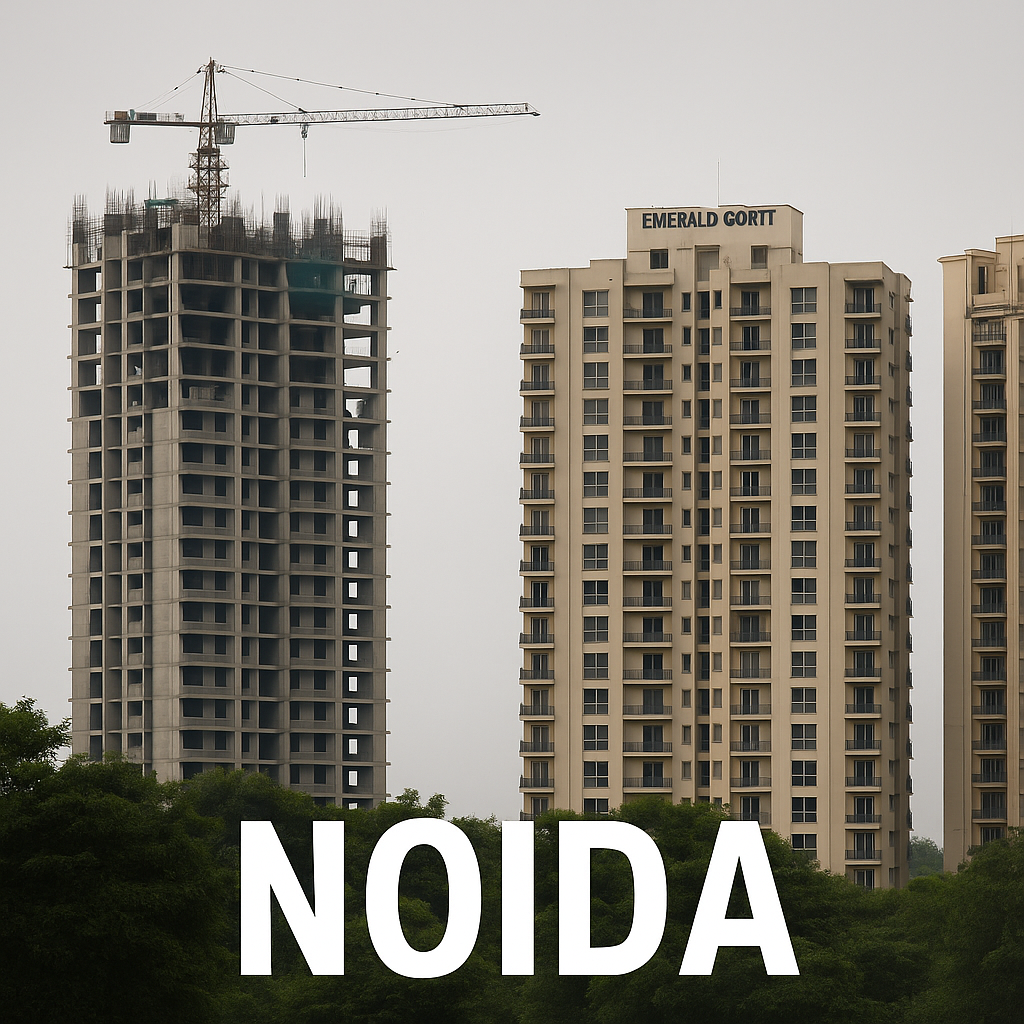The National Green Tribunal (NGT) has raised serious concerns over illegal constructions mushrooming across parts of Noida, especially in areas falling within the eco-sensitive floodplain zones of the Hindon and Yamuna rivers. In its latest directive, the NGT has demanded a detailed and updated report after previous submissions were deemed insufficient and lacking clarity.
What Sparked the NGT’s Latest Intervention?
The tribunal’s current focus stems from a long-pending petition regarding rampant illegal construction and unregulated urban sprawl along the Hindon floodplain. The petition flagged several residential colonies and builder projects that had come up in violation of green norms, despite the area’s ecological fragility.
In response to the tribunal’s earlier directions, the Noida Authority had submitted a status report. However, during a recent hearing, the NGT bench led by Justice Prakash Shrivastava and expert member Dr. A. Senthil Vel observed that the report failed to provide an “accurate ground situation” and lacked clarity on demarcated floodplains and the extent of encroachments.
Inside Noida’s Construction Dilemma
Noida’s rapid expansion over the last decade has seen its skyline transform, but often at the cost of environmental norms. As per RTI replies and public interest litigations filed in the past, over 100 buildings have allegedly been constructed in areas close to the Hindon and Yamuna belts without necessary environmental clearance or flood zone approval.
The NGT has now ordered both the Noida Authority and the Uttar Pradesh Pollution Control Board (UPPCB) to jointly submit a comprehensive and verifiable report by August 14, 2025. The tribunal has also asked for mapping data, satellite images, and on-ground photographic evidence to support the claims.
From the Bench
“A mere narrative without concrete satellite-backed mapping and zone classification is unacceptable. The gravity of violations needs firm evidence, not vague assertions,” the bench observed.
Past Instances Highlight Regulatory Lapses
In 2022, the Uttar Pradesh Irrigation Department had flagged multiple sectors—including parts of Sector 150 and Sector 151—for constructions inside the notified floodplain zone. Yet, action remained slow or symbolic. Several builders continued to advertise and sell units in such areas, often without informing buyers about zoning restrictions.
One such buyer, Manish Verma, who invested in a housing unit near Sector 151, said:
“We were told it’s an upcoming green zone. Only later did we discover that the land was classified under floodplain categories. The builder had all approvals on paper—but no one warned us about the NGT orders.”
Environmental Impact and Flood Risk
Environmental experts warn that constructions in the floodplain not only disrupt ecological balance but also expose the region to high flood risks. With monsoon variability increasing due to climate change, such zones can become dangerous pockets of vulnerability.
According to a 2024 report by the Indian Institute of Remote Sensing (IIRS), over 160 hectares of floodplain land in Noida have been compromised by encroachments and unauthorized development.
Administrative Response So Far
A senior Noida Authority official (speaking anonymously) admitted:
“Mapping overlaps between development zones and flood zones have historically been poorly coordinated. We are now working on ground validation to ensure our response to NGT is thorough.”
However, activists and citizens remain skeptical, citing the lack of enforcement even after multiple red flags raised in earlier hearings.
Why This Case Matters for Urban Planning
The NGT’s renewed push comes at a time when urban local bodies across India are under pressure to accommodate real estate growth without compromising ecological zones. Noida, with its booming real estate sector, is now a test case for how seriously authorities treat environmental zoning laws and green court directives.
Urban planning expert and former NCRPB advisor Dr. Neha Suri notes:
“This is a wake-up call for all Tier-1 and Tier-2 cities. Floodplain zoning is not an inconvenience—it’s a safety and sustainability imperative.”
What Happens Next?
The NGT has fixed the next hearing for August 19, 2025, where it expects clear identification of illegal structures, proposed action plans, and evidence-backed demarcation maps. Failure to comply may lead to stricter penalties or interim stays on ongoing construction in the affected areas.
With satellite mapping now easily accessible and publicly verifiable, citizens too are pushing for greater transparency in how land-use categories are defined and monitored in Noida.
FAQs: NGT Action on Illegal Noida Constructions in Flood Zones
What prompted the NGT to re-investigate constructions in Noida?
The NGT found the Noida Authority’s earlier report lacking in clarity and transparency. It didn’t clearly show whether the constructions overlapped with the floodplain zones, so the tribunal has asked for a fresh, map-based report by August 14, 2025.
Which areas are likely to be most affected by the NGT’s findings?
The focus is on sectors like 150 and 151, and nearby areas along the Yamuna and Hindon rivers. These zones have seen rapid building activity, often in violation of floodplain regulations.
Why are constructions near rivers considered a violation?
Floodplains naturally absorb excess rainwater. Building in these areas increases flood risks and violates environmental and urban planning norms set by the NGT and state authorities.
What specific evidence has the NGT requested from Noida authorities?
They’ve asked for updated satellite imagery, floodplain demarcation maps, ground-level photos, and a detailed status report for each construction in question.
Has this issue affected homebuyers in the past?
Yes. Residents of sectors near the Yamuna floodplain—especially in Sector 137 and Sector 150—have faced legal uncertainty and delays in possession due to floodplain violations.
Is there a way to verify if a housing project falls in a floodplain zone?
Yes. Buyers can check GIS-based land maps from the UP government or file RTIs with Noida Authority. Legal advice is strongly recommended before purchasing property near rivers.
What consequences might builders face if violations are proven?
Builders could face demolition orders, environmental fines, cancellation of clearances, or even criminal charges under environmental laws for misrepresentation.
What’s the significance of the August 19, 2025 hearing?
That date could mark a turning point. If violations are proven, it may trigger legal action against more builders and shape new floodplain policies in NCR.
How is this situation relevant beyond Noida?
It reflects a larger problem of unregulated urban development across India. The outcome in Noida may set a legal precedent for how floodplains are protected in other cities too.
What steps should concerned citizens or buyers take now?
Homebuyers should ask for environmental clearances, check if their project falls in a notified zone, and consider legal action or intervention if needed. Being proactive now is crucial.

